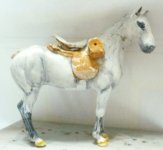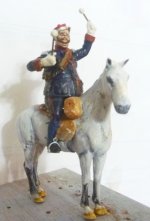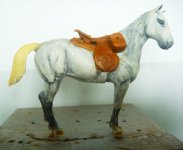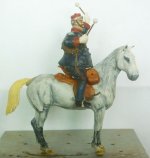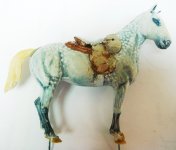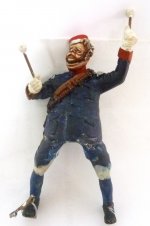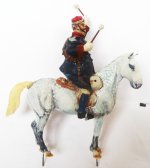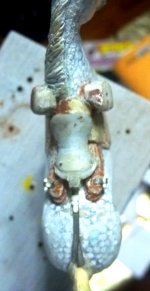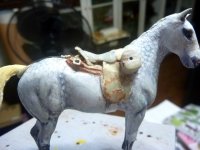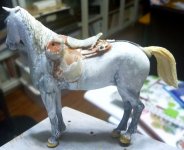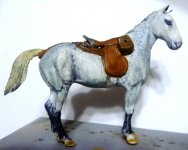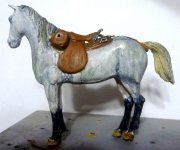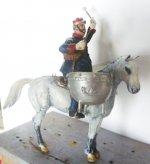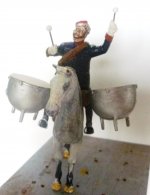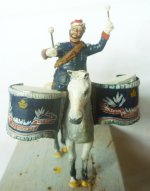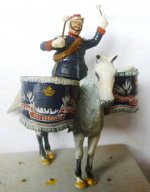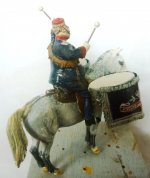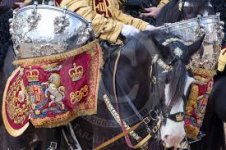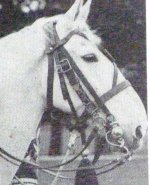blaster
Major
- Joined
- Sep 10, 2008
- Messages
- 6,527
I spent a very pleasant weekend generally working on this piece. The saddle seat was converted from a 1/35 Dragon kit accessory. This was fixed in place securely by means of two pins drilled for the arch. The figure was test-fitted on this new saddle, and his underside was sanded down to fit onto this. The saddle flaps was bulked up with putty, to be sanded down later. A Historex tail was fashioned with a Pyrogravure and the horse is now undergoing detailed painting before more straps are added.
